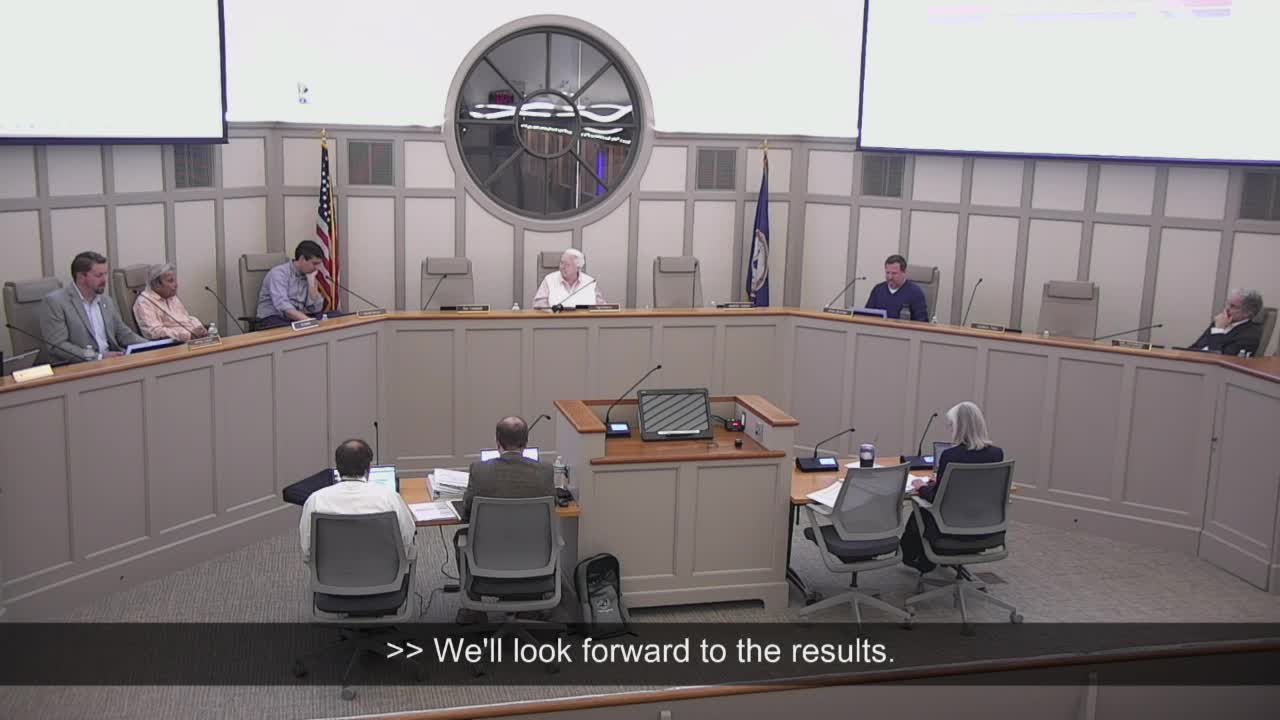Planning commission reviews rewritten sign code to align with First Amendment precedent and modernize rules
October 16, 2025 | Leesburg, Loudoun, Virginia
This article was created by AI summarizing key points discussed. AI makes mistakes, so for full details and context, please refer to the video of the full meeting. Please report any errors so we can fix them. Report an error »

Staff presented a comprehensive rewrite of the town's sign regulations intended to align local rules with U.S. Supreme Court precedent (Reed v. Gilbert), modernize sign categories and provide clearer, graphic examples and measurement rules.
The draft groups zoning districts into sign groups (residential, suburban commercial, urban mixed use, industrial/employment and special purpose) and regulates sign types (attached, freestanding, temporary) by group. Staff said the rewrite removes content‑based regulation and focuses on location, size, height and number. The draft generally prohibits the use of electronic message boards (EMBs) on attached signs (for example, wall or projecting signs) while allowing EMBs in restricted cases for some freestanding signs (for example, kiosk or monument signs subject to brightness and operation standards).
Staff walked the commission through illustrative examples (awning, projecting, marquee, directory and monument signs), measurement rules (for wall signs: 1.25 square feet of signage per linear foot of building frontage), illumination standards (shielded external fixtures or internally halo‑lit/LED signs subject to brightness thresholds), and specific allowances for special uses such as vehicle dealerships and fuel stations.
Commissioners raised practical questions about how applicants would navigate the online draft and asked staff to create explicit hyperlinks from each sign‑type section to the illumination and measurement standards so sign contractors and business owners can find applicable rules easily. One commissioner asked whether certain home‑occupation or small noncommercial uses in urban residential districts could use projecting signs; staff noted permitted nonresidential exception uses in some urban residential zoning categories and agreed to clarify examples.
Action: the commission agreed to form a small sign‑regulation review team (Commissioner Brooks volunteered; staff and other commissioners to participate as available) to proof the draft, test the online links and return recommended edits at the next workshop. Staff will also post the revised draft online in the encode/modernization platform with click‑through links to measurement and illumination standards before the next public review.
The draft groups zoning districts into sign groups (residential, suburban commercial, urban mixed use, industrial/employment and special purpose) and regulates sign types (attached, freestanding, temporary) by group. Staff said the rewrite removes content‑based regulation and focuses on location, size, height and number. The draft generally prohibits the use of electronic message boards (EMBs) on attached signs (for example, wall or projecting signs) while allowing EMBs in restricted cases for some freestanding signs (for example, kiosk or monument signs subject to brightness and operation standards).
Staff walked the commission through illustrative examples (awning, projecting, marquee, directory and monument signs), measurement rules (for wall signs: 1.25 square feet of signage per linear foot of building frontage), illumination standards (shielded external fixtures or internally halo‑lit/LED signs subject to brightness thresholds), and specific allowances for special uses such as vehicle dealerships and fuel stations.
Commissioners raised practical questions about how applicants would navigate the online draft and asked staff to create explicit hyperlinks from each sign‑type section to the illumination and measurement standards so sign contractors and business owners can find applicable rules easily. One commissioner asked whether certain home‑occupation or small noncommercial uses in urban residential districts could use projecting signs; staff noted permitted nonresidential exception uses in some urban residential zoning categories and agreed to clarify examples.
Action: the commission agreed to form a small sign‑regulation review team (Commissioner Brooks volunteered; staff and other commissioners to participate as available) to proof the draft, test the online links and return recommended edits at the next workshop. Staff will also post the revised draft online in the encode/modernization platform with click‑through links to measurement and illumination standards before the next public review.
View full meeting
This article is based on a recent meeting—watch the full video and explore the complete transcript for deeper insights into the discussion.
View full meeting
